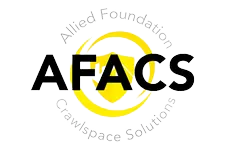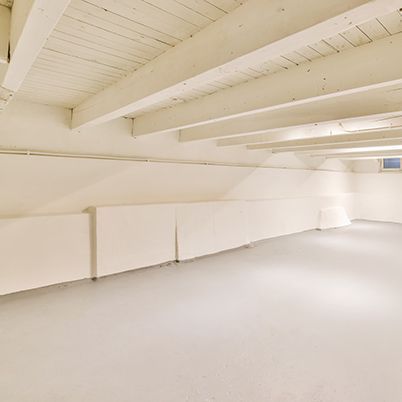Foundation Repair Methods: Slab Jacking vs Piering
The foundation repair of a home is vital to its stability, longevity, and overall structural integrity. A damaged foundation can cause a house to sink into the ground, damaging the entire structure either quickly or over time. A compromised foundation can permit dangerous gasses like radon to seep into the living space threatening the health of the inhabitants. It can also make a home exceptionally vulnerable during an earthquake. If your home’s foundation has been damaged, there are two preferred methods of repairing it. These are slab jacking and the use of pier supports.
Here, we will discuss the pros and cons of each method to help you select the best means of repairing a foundation for your budget and the needs of the structure.
Slab Jacking vs Piering
These two methods are the most commonly used in foundation restoration. They are the oldest methods still in use and are, therefore, well proven and understood. The two approaches are mechanically distinct from each other and use different modes of support. A professional should select the proper method for your foundation job after a thorough inspection. The following is for informational purposes only.
Slab Jacking
Also known as concrete lifting, this foundation repair method is often used in homes where the foundation is a solid slab rather than a below-ground basement. The process is as follows;
1. Holes are drilled in a pattern beneath the slab near the damaged area.
2. Polyurethane or another synthetic foam is poured into the holes beneath the slab using special equipment.
3. The foam or polyurethane fills the holes and lifts the broken portion of the foundation.
4. The contractor will slowly and carefully continue the pouring until the slab’s broken portion is raised to the point where it will be secured.
5. The contractor will then fill the holes beneath the slab with a mix of concrete and other materials to secure its new position and level with the rest of the foundation slab.
This method is usually the most affordable means of raising and repairing a foundation because it is the simplest and can be done in most weather conditions. Lifting the slab this way is the safest method since there are few to no gaps between the lifting structures and no workers need to go beneath the building. It is also the least disruptive method, causing minimal harm to the surrounding property and minimal disruption to the visible structure above ground.
Piering
This method is used when it has been determined that concrete or metal posts are the best tools to shore up a sinking foundation. This method may be used when a below-ground basement is part of the damaged portion of the foundation. It may also be used when the soil beneath the structure is expansive or otherwise unstable. The piering process usually proceeds as follows;
1. The area surrounding the damage is excavated.
2. The foundation is then prepped so that the concrete or steel piles can be attached using support brackets.
3. The steel posts are then driven into the ground beneath the foundation until they stop and are secure. The piles will stop when they encounter a blockage, which in the ideal circumstance will be stone.
4. Then hydraulic jacks are used to raise the damaged foundation until it is level with the undamaged portion of the foundation.
5. The steel or concrete piles are then permanently attached to the foundation with additional steel brackets.
When the process is complete, the structure’s weight is transferred onto load-bearing soil or stone beneath the expansive or otherwise unstable ground where the foundation was originally built.
Diagnosing a Damaged Foundation
If the damage is extensive enough, the home’s structure may be so degraded as to be unsafe for habitation. Should the damage go much further, the structure may become unsalvageable. Fortunately, there are ways to detect foundation damage early, in many cases even by non-professionals. If you notice any of the following warning signs, it is time to call in the pros to inspect your foundation.
Signs of a Troubled Foundation
Gaps: While it is normal for houses to settle and shift as the soil and temperatures respond to natural conditions, significant gaps are not typical. A sinking foundation can cause noticeable gaps between the moulding and the floor, between a door and the door frame, or between a window frame and the wall. Likewise, if doors or windows get stuck or become difficult to open or close, these are signs of foundation trouble.
Deformed Walls: Should you notice sagging, bowing, or other changes in the shape of a wall, that is another sign of a troubled foundation. In most cases, these kinds of problems are not beyond repair. But the foundation will need to be repaired before above-ground maintenance can be expected to last.
Water Ingress: A sagging foundation can allow water to enter between the gap in the bottom of a wall and the slab. Water intrusion is always a bad sign and will cause other problems quickly. In many cases, gaps between the wall and the floor should be visible if a sagging foundation is the cause.
Cracks: Homes with stone or brick structures or facades will likely show cracks when the foundation is deformed. But cracks are a sign of potential foundation damage in any structure. If these are not repaired, they will progressively grow larger in most cases.
If you spot any of these or similar problems, it is best to have a foundation repair professional and a structural engineer inspect the foundation at the earliest possible opportunity. Any delays increase the likelihood of further damage, complicating repairs and increasing the cost.
The good news is that a qualified foundation repair contractor has a workable remedy for almost any problem your foundation may face. The important thing is to obtain qualified inspections and have the correct type of repair performed in a timely fashion.
Choosing a Foundation Contractor
There are several variations on the two methods of foundation repair described here. Depending on the type of soil, stone, or other deeper soil elements, the design and structure of the foundation itself, and the size and proportions of the building your foundation restoration contractor will inspect, assess, and determine the best method of repair. Other repair methods include;
- Masonry Patches & Sealants
- Epoxy Resin
- Slab-Jacking
- Mud Jacking
In most cases, Slab Jacking or Piering will be the ideal repair method. Qualified professionals should always deal with issues with your foundation. Working with a contractor with all the right qualifications is crucial. These include;
- Proper licensing
- Complete insurance coverage
- Proper certifications
- Experience
The proper licensing ensures that training and certifications have been obtained from trustworthy educational bodies and that the work performed will be up to the latest industry standard. Complete and proper insurance coverage is essential to help with unforeseeable accents or problems. It also shows that your contractor is committed to customer satisfaction and can perform the work legally. Having the proper certifications shows that the contractor is competent to complete the work required. It also helps corroborate the legitimacy of other documents and claims made by the contractor. Finally, the contractor should be able to point you to other work they have performed, supported by positive customer reviews.
Potential foundation damage should be dealt with early and fully. If you notice possible foundation damage, it is vital to call the professionals immediately. In the worst-case scenario, the damage to your foundation will be limited, as will the cost of repairs.
In the best-case scenario, those cracks or deformed walls may turn out to have a less serious cause, and you will have peace of mind knowing that your foundation is in good condition.
To find out whether you need to have your foundation repaired, give us a call!
Sources:
https://www.bestpickreports.com/blog/post/foundation-repair-methods-slabjacking-vs-piering/











